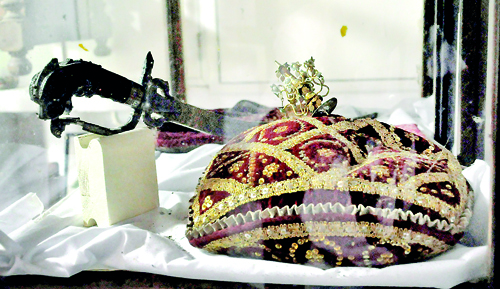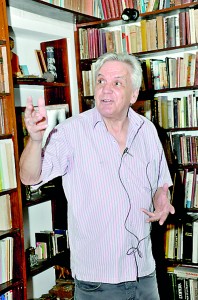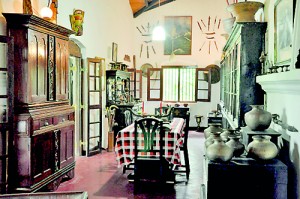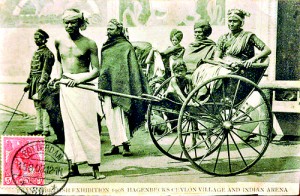A home where you can wander through history
View(s):An old walauwa in Kandy now a cultural centre, Suriyakantha may be a little hard to find, but it’s worth the effort. The beautiful old building in Naranwala just 10 km from Kandy is packed with treasures, to which owner Jacques Soulié is a great guide. Here he answers our questions, sharing the highlights of the Suriyakantha experience and his hopes for its future.
- How did you come to be living in Sri Lanka?
I have been regularly visiting Sri Lanka since 1978 for holidays and that’s how I came into contact with this country, its people and its culture. Furthermore, while living in France, I had the opportunity to get involved in several socio-cultural activities that the  authorities like the Embassy of Sri Lanka in France, the UNESCO (Paris) and the International Buddhist Centre (Le Bourget) used to carry out. One thing leading to another, I decided to come and live in Sri Lanka for good. I moved to Sri Lanka in 1994. The idea of implementing a cultural centre was already in germ, although it came to full fruition only a few years later.
authorities like the Embassy of Sri Lanka in France, the UNESCO (Paris) and the International Buddhist Centre (Le Bourget) used to carry out. One thing leading to another, I decided to come and live in Sri Lanka for good. I moved to Sri Lanka in 1994. The idea of implementing a cultural centre was already in germ, although it came to full fruition only a few years later.
- Tell us about the history of the walauwa? When did you decide to turn it into an informal
museum, as it were?
In the early 1990’s, my associate and friend late Rohan de Silva and myself were seeking an ancient edifice to house our project of a structure aimed at promoting cultural exchanges between Sri Lanka and France. When we visited this historical Naranwala Walauwa, we did not hesitate a second on the authentic value of this place. According to the sources that we could get hold of, in the 18th Century, the land was acquired by a family of noblemen from Sabaragamuwa. We never found the precise sources to attest when the edifice itself was built, but given its Dutch Colonial style, we can claim that the house was built in the 18th Century.

Preserving the past: Jacques Soulie
When acquired in 1992, the house was, however, in a state of ruin. Hence, a long and meticulous work of renovation needed to be undertaken to restore it. The challenge was to keep its historical value intact. Inspired by the spirit of Ananda Coomaraswamy in his “Open Letter to Kandyan chiefs” written in 1905, in which he insists the need to preserve architectural treasures of the recent past, we invested energy and important material means to restore it. Once the renovation work was through, a large collection of art objects and books that I have been acquiring since a long time, was brought here. Since this collection had a lot to do with Sri Lankan culture, the idea of presenting it to the public became evident.
- Could you give us a sense of the collections housed at Suriyakantha? Are there particular highlights visitors must see?
As for the local collectibles, the Centre aims at gathering artefacts from the near neighbourhood. Some of these objects are the only palpable elements of particular customs, habits and practices which have long been lost or in the process of disappearing.
Among the highlights of our collection, I would particularly like to draw your attention on the traditional furniture, the collections of Killota, terracotta sculptures, ola leaved books, ancient arms (a particularly rare piece, a Kastane sword dating back to the 18th century) and of course our library containing many original and rare editions of books, old photographs (particularly by the famous photographers like Skeen and Scowen), and postcards featuring old Ceylon… The library of the Centre offers a multilingual documentation and resources in Sinhala, English and French languages for research work on Sri Lankan History and Art. A  particular attention is also given to Western art with numerous catalogues of the exhibitions held across European capitals over the past decades. The most recent addition to our collection is a paddy store (Atuwa) that we installed in our premises.
particular attention is also given to Western art with numerous catalogues of the exhibitions held across European capitals over the past decades. The most recent addition to our collection is a paddy store (Atuwa) that we installed in our premises.
- How has the cultural centre evolved over the years?
The project started as a personal venture and it soon became evident that the interest of the project exceeded the personal sphere. That’s how we made of this private residence a place where people could wander through art and history. Speaking about the evolution, the Centre was recently embellished by a small art gallery with the  prospect of curating temporary exhibitions, particularly in the field of photography. We have also opened a café-restaurant in our courtyard: Meda Midula Café.
prospect of curating temporary exhibitions, particularly in the field of photography. We have also opened a café-restaurant in our courtyard: Meda Midula Café.
- What are your long terms plans for Suriyakantha?
On one hand, we intend to contribute to research by putting the rare books of our collection at the disposal of scholars and students. On the other hand, Suriyakantha Art Gallery aims at promoting contemporary artists and artistic creations of the region. The global objective is to make our centre a main cultural site in the district of Kandy, in the close proximity of the prestigious monuments of the Gampola Kingdom: Lankathilaka, Gadaladeniya and Embekke.
Find more on Suriyakantha online: www.suriyakantha.org. Please note that visitors are requested to make reservations 24 hours in advance by email (info@suriyakantha.org) or telephone (081 2315545).
-S.D.


